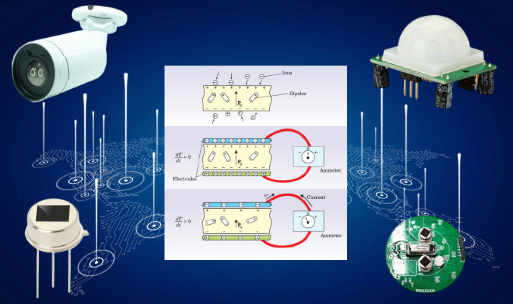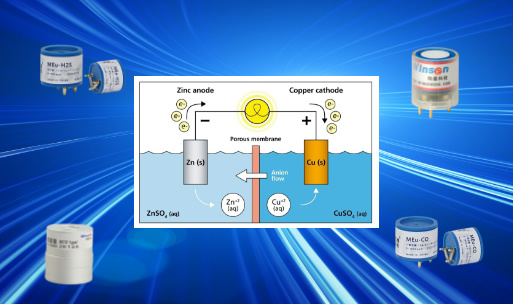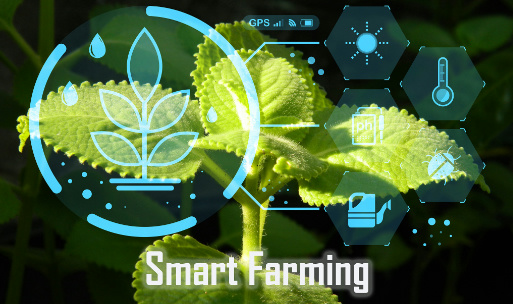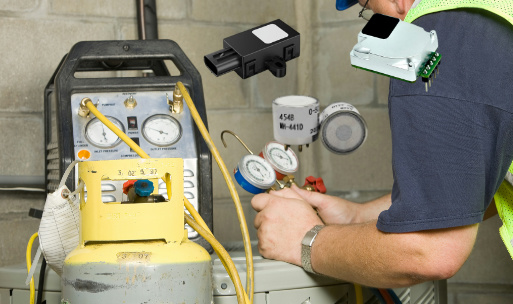Integrating AI with Sensor Technology, A Future-Ready Approach for Innovation
In recent years, the rapid evolution of artificial intelligence (AI) has revolutionized various industries, bringing unprecedented advancements and opportunities. As a leading manufacturer of sensors, including those for gas, pressure, water quality, temperature and humidity, and automotive applications, our company is uniquely positioned to harness the power of AI to push the boundaries of innovation. This article explores how AI can be integrated with sensor technology, the potential benefits, and how our sensors can play a crucial role in this transformative journey.
The Convergence of AI and Sensor Technology
Sensors have long been the backbone of various industries, providing critical data for monitoring, control, and decision-making. However, the traditional approach to using sensors has typically involved simple data collection and transmission, with little to no processing or analysis done on the sensor level. The introduction of AI changes this paradigm by enabling sensors to not only collect data but also to analyze and interpret it in real-time. This shift towards "smart sensors" opens up a wide array of possibilities, from improving operational efficiency to enabling new applications that were previously unimaginable.
1. Enhanced Data Processing Capabilities
One of the most significant benefits of integrating AI with sensors is the enhancement of data processing capabilities. Traditional sensors are limited to raw data output, which requires extensive processing by external systems. AI, particularly machine learning algorithms, can be embedded directly into sensor systems, allowing for on-device processing. This results in faster decision-making and reduces the need for large data transfers to centralized systems, which can be both time-consuming and costly.
For example, in gas detection sensors, AI can be used to enhance the accuracy and reliability of gas concentration measurements. Machine learning models can be trained on historical data to predict sensor drift, detect anomalies, and adjust calibration dynamically. This leads to more accurate and reliable gas monitoring, which is critical in industries like chemical processing, mining, and environmental monitoring.
2. Predictive Maintenance and Diagnostics
Predictive maintenance is another area where AI can add significant value to sensor technology. By analyzing sensor data in real-time, AI algorithms can predict when a piece of equipment is likely to fail, allowing for maintenance to be performed before a breakdown occurs. This not only reduces downtime but also extends the lifespan of the equipment.
In the automotive industry, for instance, pressure sensors and temperature sensors equipped with AI can monitor the condition of critical engine components. By analyzing the data, AI can predict when a part is likely to wear out or fail, prompting preemptive maintenance actions. This not only improves vehicle safety but also enhances customer satisfaction by reducing the likelihood of unexpected breakdowns.
3. Adaptive and Intelligent Systems
AI-powered sensors can enable adaptive and intelligent systems that respond dynamically to changing conditions. In water quality monitoring, for example, sensors can be equipped with AI to adapt to varying environmental conditions and automatically adjust their sensitivity and detection thresholds. This ensures that water quality is monitored accurately, regardless of changes in temperature, pH, or other factors.
In the context of temperature and humidity sensors, AI can enable intelligent climate control systems that learn from historical data and user preferences. These systems can predict the most comfortable conditions for different times of the day or varying occupancy levels, optimizing energy use while maintaining comfort.
4. Advanced Pattern Recognition and Anomaly Detection
Pattern recognition and anomaly detection are areas where AI excels, and when combined with sensor data, they can lead to powerful applications. For instance, in industrial settings, AI can analyze data from multiple sensors to identify patterns that may indicate potential issues, such as unusual vibration patterns detected by pressure sensors or irregular gas concentration levels.
In the automotive industry, AI can process data from various sensors, such as accelerometers, gyroscopes, and gas sensors, to detect abnormal behavior that could indicate a safety risk, such as a potential gas leak or a mechanical failure. This allows for immediate corrective actions, enhancing safety and preventing accidents.
5. AI-Driven Automation
Automation is one of the key drivers of efficiency in modern industries, and AI-enhanced sensors can take automation to the next level. By integrating AI, sensors can make autonomous decisions based on real-time data, reducing the need for human intervention.
For example, in smart manufacturing, AI-equipped sensors can monitor production processes and automatically adjust parameters to optimize output, reduce waste, and improve product quality. Similarly, in smart cities, AI-driven sensors can manage traffic flow, monitor environmental conditions, and optimize energy use, leading to more efficient and sustainable urban environments.
Applications of AI-Integrated Sensors Across Industries
The integration of AI with sensors is not limited to a specific industry; it has the potential to transform various sectors by enabling smarter, more efficient, and more reliable systems. Here are a few examples of how our sensors, when combined with AI, can revolutionize different industries:
1. Environmental Monitoring
In environmental monitoring, AI can be used to enhance the accuracy and efficiency of gas and water quality sensors. For instance, AI algorithms can analyze data from multiple sensors to predict air quality trends, identify pollution sources, and suggest mitigation measures. In water quality monitoring, AI can detect subtle changes in water chemistry, enabling early detection of contamination events.
2. Healthcare
In the healthcare industry, AI-integrated sensors can play a vital role in patient monitoring and diagnostics. For example, pressure sensors in wearable devices can monitor blood pressure in real-time, with AI algorithms analyzing the data to detect irregularities and predict potential health issues. Temperature and humidity sensors can be used in smart healthcare environments to maintain optimal conditions for patients, with AI ensuring that environmental parameters are constantly adjusted for patient comfort and safety.
3. Automotive Industry
The automotive industry stands to benefit significantly from AI-enhanced sensors. From autonomous driving to predictive maintenance, AI can process vast amounts of data from various sensors to make real-time decisions that improve vehicle performance, safety, and reliability. For example, AI can analyze data from pressure sensors to optimize tire pressure, reducing wear and improving fuel efficiency. Similarly, gas sensors can monitor air quality inside the vehicle, with AI adjusting the ventilation system to maintain a healthy environment.
4. Agriculture
In agriculture, AI-integrated sensors can be used to monitor soil conditions, water quality, and environmental factors, enabling precision farming. AI algorithms can analyze data from these sensors to optimize irrigation, predict pest outbreaks, and improve crop yields. For instance, temperature and humidity sensors equipped with AI can monitor greenhouse conditions, ensuring that plants receive the optimal growing environment.
5. Industrial Automation
In industrial automation, AI-enhanced sensors can optimize production processes by monitoring various parameters, such as pressure, temperature, and gas concentrations. AI can analyze this data to detect inefficiencies, predict equipment failures, and suggest process improvements. This leads to increased productivity, reduced downtime, and lower operational costs.
Challenges and Considerations
While the integration of AI with sensors offers numerous benefits, it also presents certain challenges that need to be addressed:
1. Data Privacy and Security
The vast amounts of data generated by AI-enhanced sensors raise concerns about data privacy and security. Ensuring that sensitive data is protected from unauthorized access and breaches is critical, particularly in industries like healthcare and automotive, where data privacy is paramount.
2. Computational Power and Energy Consumption
AI algorithms, particularly those involving deep learning, require significant computational power. Embedding these algorithms into sensors, especially those operating in remote or power-constrained environments, presents challenges related to energy consumption and processing capabilities. Optimizing AI algorithms for low-power devices and developing energy-efficient hardware are essential to overcoming these challenges.
3. Interoperability and Standards
As AI-enhanced sensors become more prevalent, ensuring interoperability between different devices and systems becomes crucial. Establishing industry standards for AI-integrated sensors can facilitate seamless integration and communication between devices, enabling the development of more comprehensive and connected systems.
Conclusion
The integration of AI with sensor technology represents a significant leap forward in the evolution of smart systems. By embedding AI into our sensors, we can enhance their capabilities, enabling faster, more accurate, and more reliable data processing. This not only opens up new possibilities for innovation but also positions our company at the forefront of a rapidly evolving industry.
As we continue to develop and refine our sensor technology, the incorporation of AI will be a key focus area. By leveraging the power of AI, we can create smarter sensors that not only meet the needs of today but also anticipate the challenges of tomorrow. Whether it's in environmental monitoring, healthcare, automotive, agriculture, or industrial automation, our AI-enhanced sensors will play a critical role in shaping the future of technology and improving the quality of life for people around the world.
In conclusion, the convergence of AI and sensor technology is not just a trend but a fundamental shift that will redefine how we interact with the world around us. As a leading sensor manufacturer, we are committed to embracing this change and leading the way in the development of AI-powered sensors that drive innovation, efficiency, and sustainability across industries.







